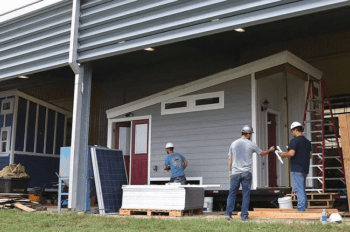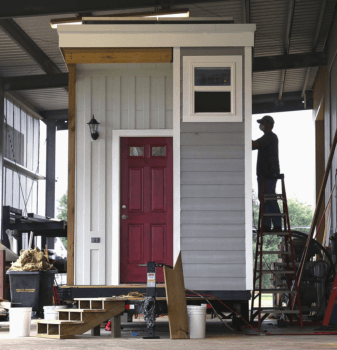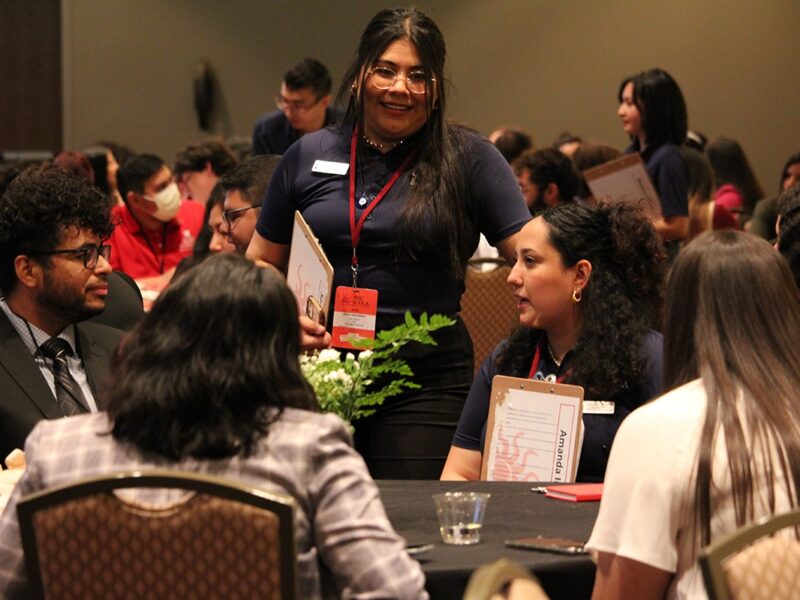Student-designed ‘Tiny’ Homes To House Homeless, On Display This Week
 Two “tiny” homes designed and built by students at the Texas A&M College of Architecture will soon house a disabled homeless person and a homeless veteran.
Two “tiny” homes designed and built by students at the Texas A&M College of Architecture will soon house a disabled homeless person and a homeless veteran.
The new tiny homes will be displayed at Rudder Plaza today and tomorrow (Nov. 14-15) prior to being shipped to the Community First! Village in Austin and the Veterans Community Project in Kansas City, agencies that house the homeless in villages of tiny houses, a broad category generally referring to residences 300 square feet or less.
Advocates of tiny house living tout the homes’ low cost to build, live in and maintain, as well as their sustainability and simplified lifestyle.
Students led by Ben Bigelow, assistant professor of construction science, built the houses on 8’ x 20’ trailers at the College of Architecture’s Automated Fabrication and Design Lab on the RELLIS Campus from schematic designs created by Master of Architecture students Meredith Clark and Nathanielle Sybico in a spring 2016 studio led by Michael O’Brien, professor of architecture.
Amid a din from pounding hammers and whirring power tools wielded by students racing to finish building the houses, Joe Ford, a senior construction science major, said the class was one of the most valuable he’s taken because it brings together much of what he’s learned in the program.

“We’re having to deal with just about everything, like task planning, ordering supplies and site waste,” said Ford, as he applied caulk to a living room window.
He is a member of one of two evenly divided teams of 20 construction science students. Each team had $10,000 to spend on construction materials.
One of the houses is 145 square feet with a porch, deck, and a sleeping loft; the other is a 160-square-foot house with sleeping and a storage lofts. Both houses also have kitchens and bathrooms.
“The project teaches students to respect the skilled labor they will manage as construction professionals,” said Bigelow. “It also gives them a deeper understanding of the time and manpower required to complete an entire project, as well as how much things really cost to build.”
Students in the environmental design program are also assisting with the houses’ construction.
Project funding came from the College of Architecture, the Design-Build Institute of America and the Building Owners and Managers Association International.
In spring 2015, two tiny houses designed and built by Texas A&M environmental design and construction science students were delivered to Community First! Village.
Media contact: tamunews@tamu.edu.





